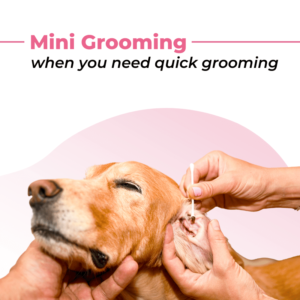
Home » Separation Anxiety in Border Terriers: 5 Tips for a Happy Dog
A dog can be a great companion for solo pet parents and families because they are loyal, affectionate, and undemanding. When it comes to popularity, the numbers say it all. But it’s sad when we see Separation Anxiety in Border Terriers
Pet ownership reached a record high in the US during the pandemic, and the trend continues in the new normal. In 2023, 66% of households reported owning at least one pet. Dogs are the evergreen favorite, followed by cats and freshwater fish.
Pet ownership is a responsibility because it entails physical care and emotional bonding. Did you know that your canine can suffer from separation anxiety when you leave it alone for an extended time? Studies show it can affect 14-20% of dogs, making it more common than you imagine. Knowing these numbers, you will surely think twice before shutting the door and leaving your pet alone for the day.
While some breeds are more susceptible than others, every dog misses its favorite human and experiences anxiety in their absence. Border Terrier is one of the most independent dog breeds, so you may take things for granted when it comes to taking time off.
Let us explain the prevalence of separation anxiety in the breed and share a few tips to keep your Border Terrier happy.

Dogs enjoy human presence, and being alone can make them anxious. You must realize it as a pet parent because stress can have long-term behavioral implications in canines. According to iBorderTerrier.com, Border Terriers are a fun-loving, sociable breed, so they hardly like being left alone. If you do it too often, your furry friend may experience separation anxiety sooner than later.
According to Tony Keller, Border Terriers make excellent family dogs because they enjoy being with kids. They can bring joy to a family as they bond well with the young and the old alike. At the same time, with such behavioral traits, they become prone to anxiety without human company.
Owners should pay attention to their pet’s temperament and align with it to raise a happy dog without Separation Anxiety in Border Terriers
While separation anxiety is a part of raising a canine, you cannot expect to be around your Border Terrier 24 by 7. Dogs and their parents need to learn to coexist with the situation. The best way to do it is by embracing some practical coping strategies.
Here are a few you can rely on:
Separation anxiety does not happen overnight. Nor is it a one-time thing. You may notice several warning signs and behavioral changes in your Border Terrier before anxiety hits it hard. Knowing them enables you to intervene and get help early. Watch out for signs like howling, pacing, excessive panting, lip licking, and aggression.
Identifying the triggers for anxious behavior is the next step in dealing with it. Triggers may differ for dogs and breeds, but the common ones include loneliness, boredom, fear, and frustration. For a Border Terrier, not having people around is the toughest challenge because they are born to thrive in human presence.
A proactive approach with early training is the best way to address separation anxiety in your Border Terrier. Training in this context entails leaving your pet alone for optimal periods. You can determine that by understanding how long the animal is comfortable alone. Create a safe space and provide it with toys and treats to keep it entertained and happy.
Border Terriers are an independent breed, so it is easier to train them to be alone and self-sufficient. Try small things to encourage independence, such as letting your pet fetch its bowl at meal times and installing a flap door to allow it to go out for the toilet without supervision.
Like humans, canines can struggle with low confidence levels, which can translate into anxious behavior, aggression, and frustration. You can do your best to boost your pet’s confidence with positive reinforcement, rewards, and bonding time. Once your Border Terrier gains it, you will not need to stress about leaving it alone.

Although dealing with separation anxiety is a part of dog ownership, it shouldn’t be a reason to give up on your pet parenting goals. The problem is less challenging with Border Terriers because they are a happy and independent breed.
You can align your pet-parenting style a bit to ease the process of dealing with anxious behavior. Try these tried and tested pieces of advice to handle the challenge and master the art of raising a happy pet.



